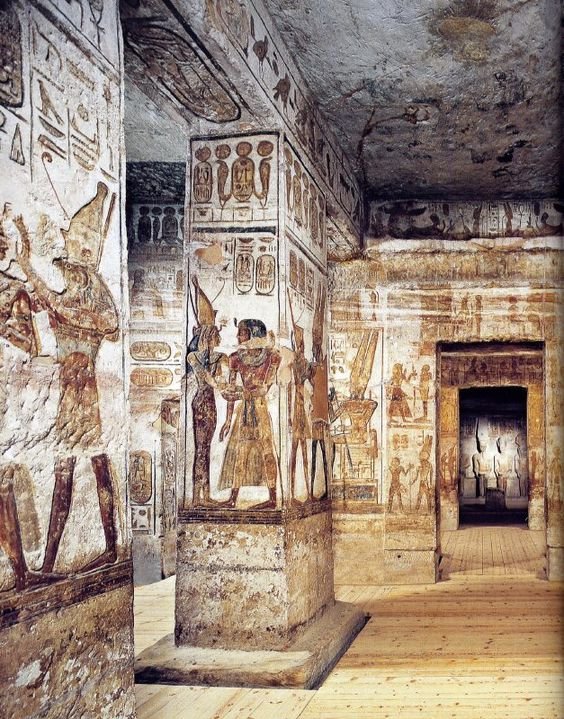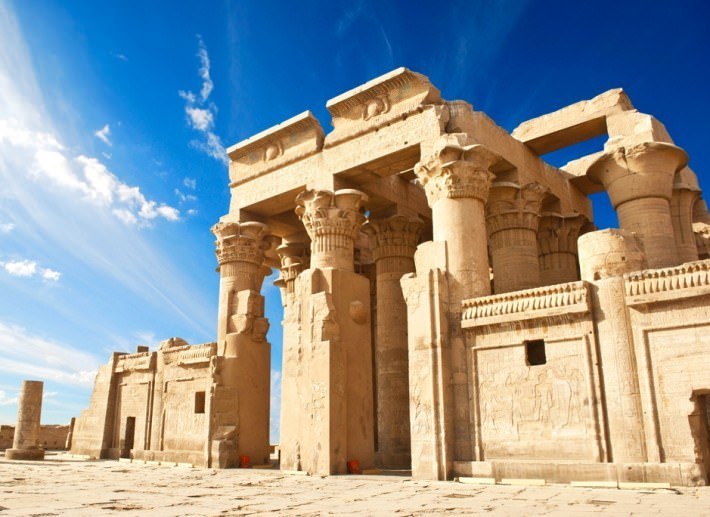Two Days Trip to Aswan, Kom Ombo and Edfu
Two Days Trip to Aswan, Kom Ombo and Edfu
1st Day:
We will pick you up directly from the entrance of your hotel in Marsa Alam; you will recognize our driver by a sign with your name in his hand. During our way to Aswan you can already gain some impressions about the Egyptian landscape and settlements; of course we will make stops whenever you need.
Once you arrive in Aswan, you will start your program with a visit of the Aswan High Dam, a huge embankment dam across the River Nile; the construction started in 1960 and it took the workers ten years to finish it up to a dam height of 111 – an extraordinary and impressing masterpiece of engineering. The thereby created reservoir, the Lake Nasser, covers a total surface area of more than 5,000 km² and has a storage capacity of approximately 160 km³ of water.
Before we enter the city, you will visit an open-air museum: the ancient granite quarries of Aswan. Our guide will explain you how in Pharaonic Egypt the people gained granite from this place to be used all over the country for the ambitious projects of the ancient kings. Imagine the outstanding abilities of the ancient Egyptians who were working on these massive blocks of stone and transported them over incredible distances – even the pyramids in Giza, 700 km farther north, consist of the Aswan granite. By the way you can also discover an example of obelisk building: the Unfinished Obelisk, probably ordered by the famous Queen Hatshepsut, but broken during the carve-out and therefore left; if they had managed to get it out of the quarry in one piece, it would have been the biggest obelisk of all ancient times.
Lots of antique buildings had been threatened by the Aswan High Dam project, and some were dismantled and rebuilt on higher located places to save these important historical sites from disappearing in the floods of the new lake. One of these rescued monuments was the Nubian Temple of Philae, now located on the island of Agilkia, which will be the next station of our tour. This temple was created to worship the ancient Egyptian goddess Isis; according to an old Egyptian myth, Isis found on this place the heart of her husband Osiris after he had been killed and cut into a lot of pieces which had been spread all over the country. The oldest preserved remains could be dated back to the 4th century B.C.; the temple was extended and rebuilt several times, and in the end even transformed into a Christian sanctuary by the Roman conquerors. Have a walk around and discover this beautiful piece of history with its colonnades, kiosks, pylons and reliefs.
After these visits you will take lunch in a local restaurant, before we will offer you a very special experience – in a Felucca, the traditional Egyptian Nile sail boat, we will bring you to Kitchener’s Island, named after its former British possessor. On the way you will pass by the famous Agha Khan Mausoleum and the Tombs of the Nobles, and your guide will provide you the adequate information en route. Then you reach the small island, and, in the heart of a busy Arabic city, you will find a small piece of paradise: the splendid botanical garden, full of exotic trees and plants, where you can have a walk and enjoy the flourishing nature and the calm.
We will finish our program with the visit of another island: the Island of Elephantine. Elephantine was a fort that stood just before the first cataract of the Nile and marked for some time the border between Egypt and Nubia. See the remains of the ancient town of Yebu/Abu, founded around 5,000 years ago, and the Temples of Khnum and Satis, the Nile deities. Watch the fascinating nilometers where for thousands of years (until the 19th century A.D.!) the level of the River Nile was measured, and have a walk through the Nubian villages which are still located on the island.
You will spend the night in a hotel; if you like, you can add the visit of the great Sound and Light Show at the Temple of Philae.
2nd Day:
The construction of the Temple of Kom Ombo, also known as the ‘Double Temple’, has started in the 2nd century BC under the Ptolemaic reign. It was dedicated to two different deities – the crocodile-headed creator god Sobek and the falcon-headed god Haroeris, a variation of the sky god Horus who had been one of the most important ancient Egyptian deities. As two gods should be worshipped here, it was necessary to build courts, halls, rooms and sanctuaries in duplicate. Everything was therefore built in a perfect symmetry along the main axis which is not typical for Egyptian temples at all. Its walls and pillars contain a great decoration with wonderful reliefs, on which the ancient Egyptians worked until the 3rdcentury AD without ever finishing it completely. At some places you can still see the colors used at that time.
Further you can see an ancient nilometer where the level of the River Nile was measured, an unfinished but well preserved chapel dedicated to the love goddess Hathor, and an exhibition of mummies and sarcophagi of crocodiles, the god Sobek’s sacred animals, which had been found in a nearby necropolis.
After this visit you will enjoy lunch in a local restaurant.
The Temple of Edfu, your second stop, is one of the best preserved ancient temples in Egypt, still nearly intact both in- and outside. It was built in the Ptolemaic era. The construction began in 237 BC; it should be completed only almost 200 years later. It was the biggest temple dedicated to the falcon god Horus and his companion Hathor with a length of 137 meters and a width of 79 meters; its pylon is remarkable 36 meters high and consists of two towers, accessible from the inside, flanking the large portal. Two falcons made of black granite are until today guarding the entrance. The temple of Edfu is still more than splendid, and in ancient times it was the center of several glorious festivals sacred to Horus. Its decorated walls are not only beautiful, but have also been a rich source for historians and archaeologists as among others they describe the temple’s construction and contain precious information about the religion and its myths during the Greco-Roman period.
In the evening you will be back in your hotel in Marsa Alam.
Included:
- Transfers from/to your hotel and between the sights in high-class vehicles with A/C
- Felucca Trip to Kitchener’s Island and Boat Trip to Elephantine Island
- Guided tours in your language
- Entrance fees for the above mentioned sights
- Lunch in local restaurants
- One night hotel accommodation in Aswan (3, 4 or 5* upon your choice) with dinner and breakfast
- Mineral water and soft drinks
Not included:
- Gratuity (tips) for drivers, tour guides
- Personal items, meals, drinks or services not mentioned
- International and domestic flights
- Visa













